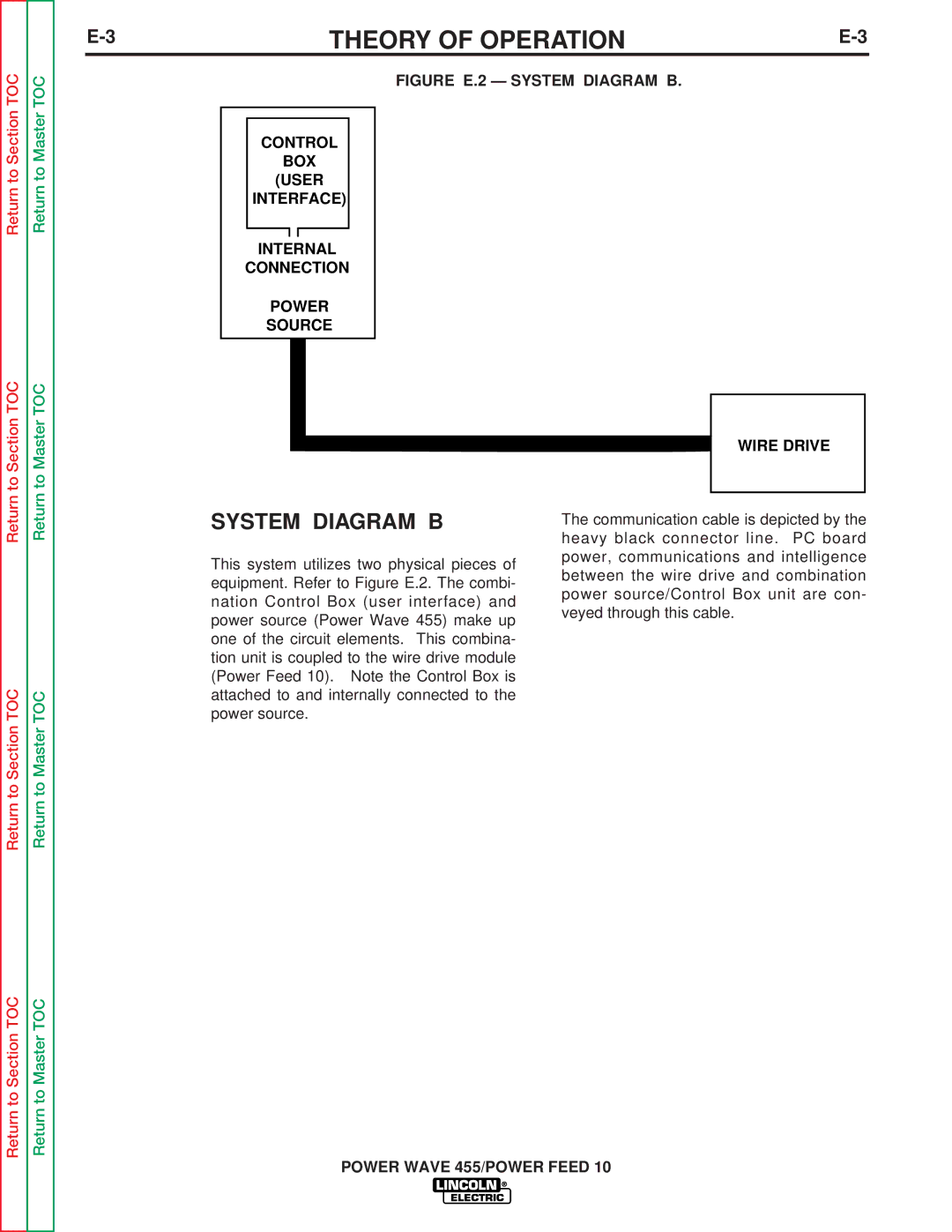
Return to Section TOC
to Section TOC
Return to Master TOC
to Master TOC
|
|
| THEORY OF OPERATION | ||||
|
|
|
|
|
| FIGURE E.2 — SYSTEM DIAGRAM B. |
|
|
|
|
|
|
|
| |
|
|
|
|
|
|
| |
|
| CONTROL |
|
|
| ||
|
| BOX |
|
|
| ||
|
| (USER |
|
|
| ||
|
| INTERFACE) |
|
|
| ||
|
|
|
|
|
|
| |
|
|
|
|
|
|
|
|
|
| INTERNAL |
|
| |||
| CONNECTION |
|
| ||||
|
| POWER |
|
| |||
|
| SOURCE |
|
| |||
|
|
|
|
|
|
|
|
WIRE DRIVE
Return
Return to Master TOC
Return to Master TOC
SYSTEM DIAGRAM B
This system utilizes two physical pieces of equipment. Refer to Figure E.2. The combi- nation Control Box (user interface) and power source (Power Wave 455) make up one of the circuit elements. This combina- tion unit is coupled to the wire drive module (Power Feed 10). Note the Control Box is attached to and internally connected to the power source.
The communication cable is depicted by the heavy black connector line. PC board power, communications and intelligence between the wire drive and combination power source/Control Box unit are con- veyed through this cable.
POWER WAVE 455/POWER FEED 10
